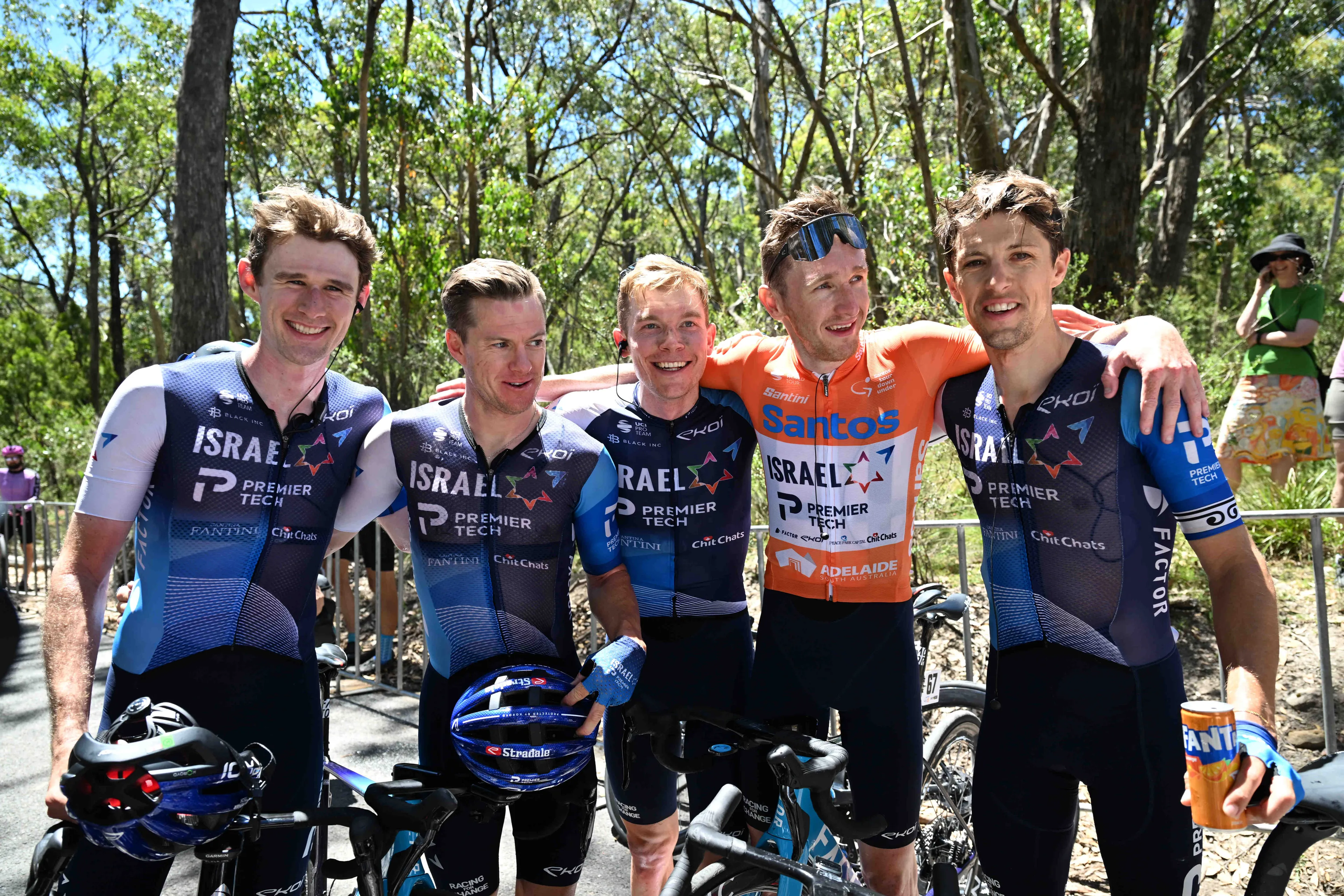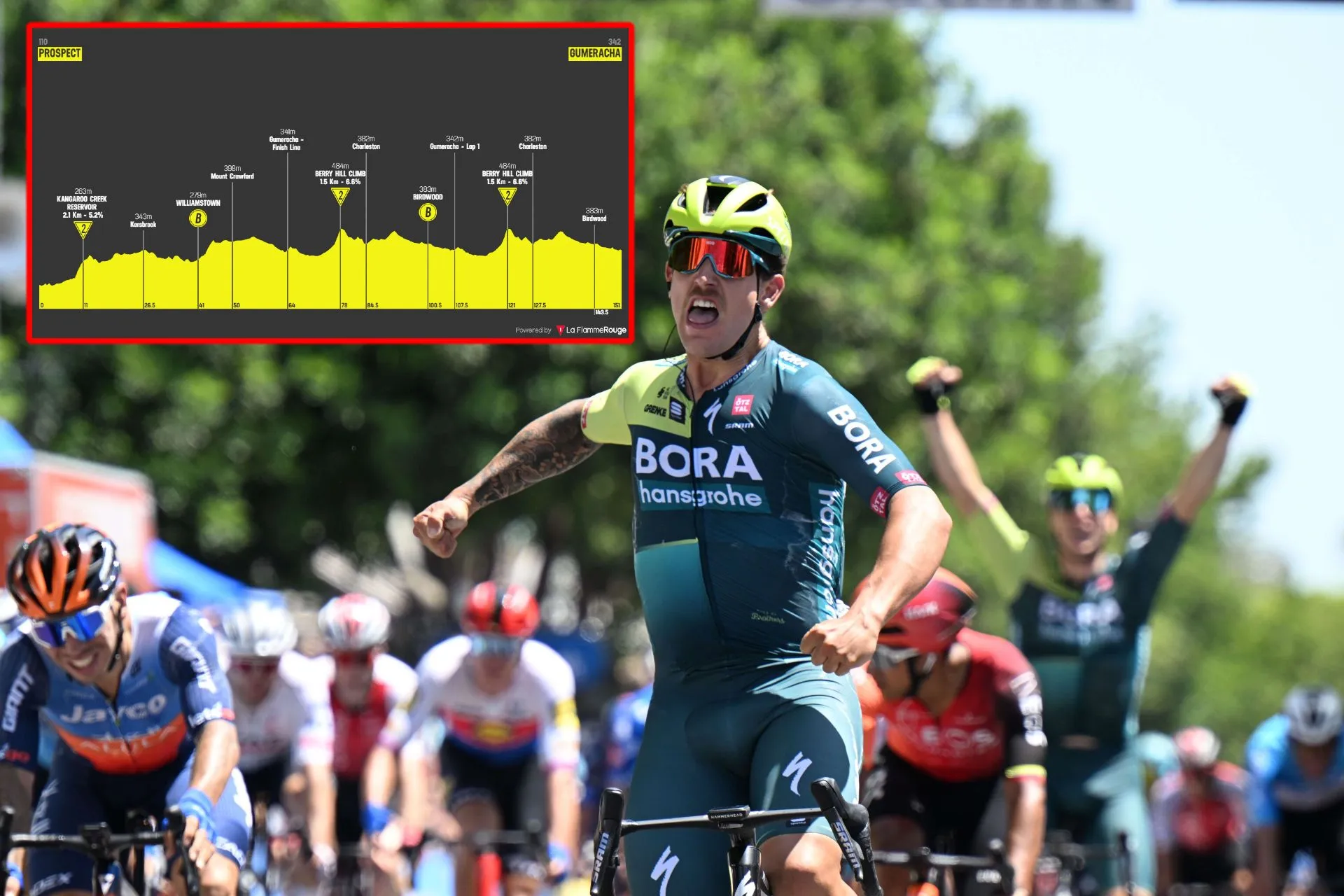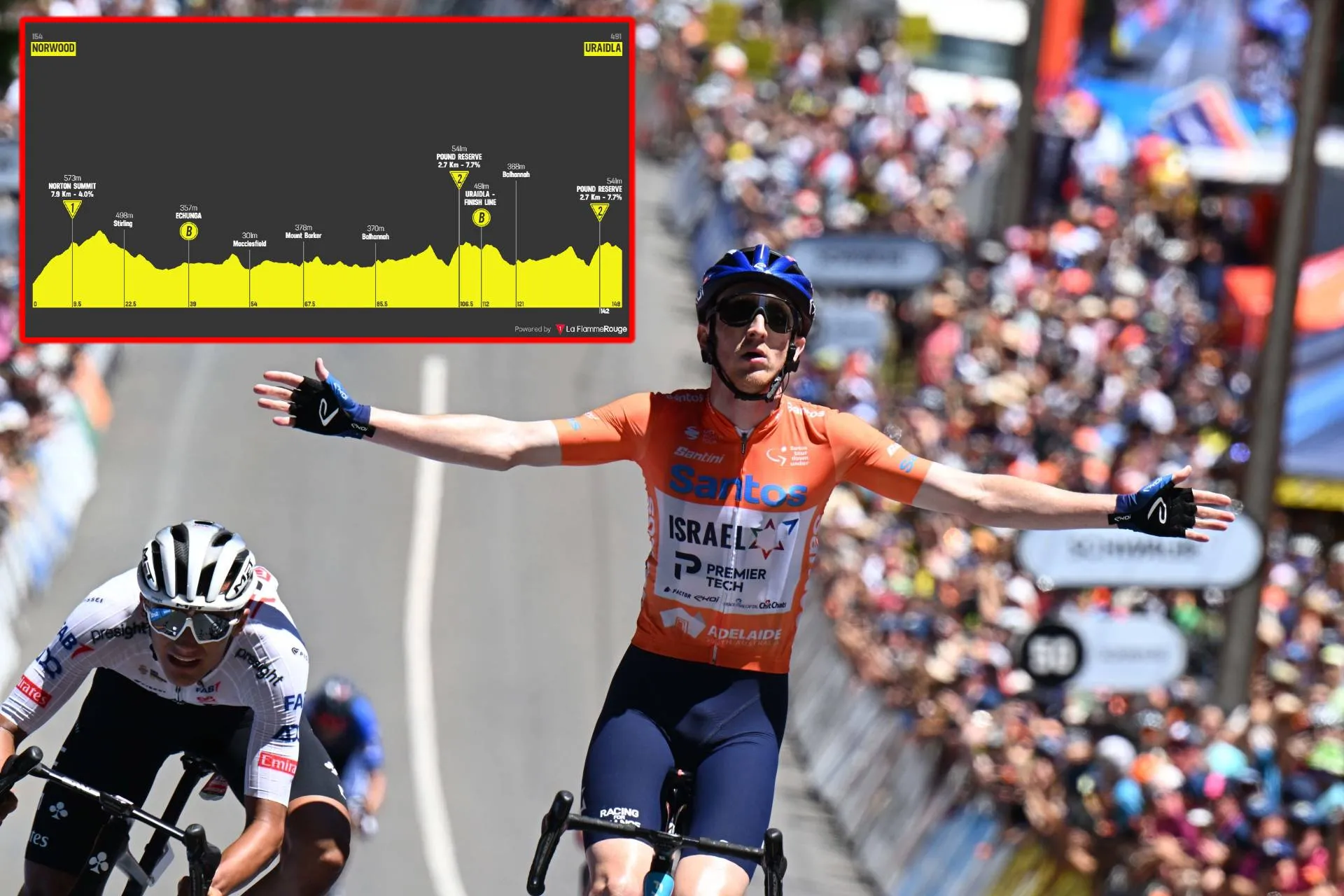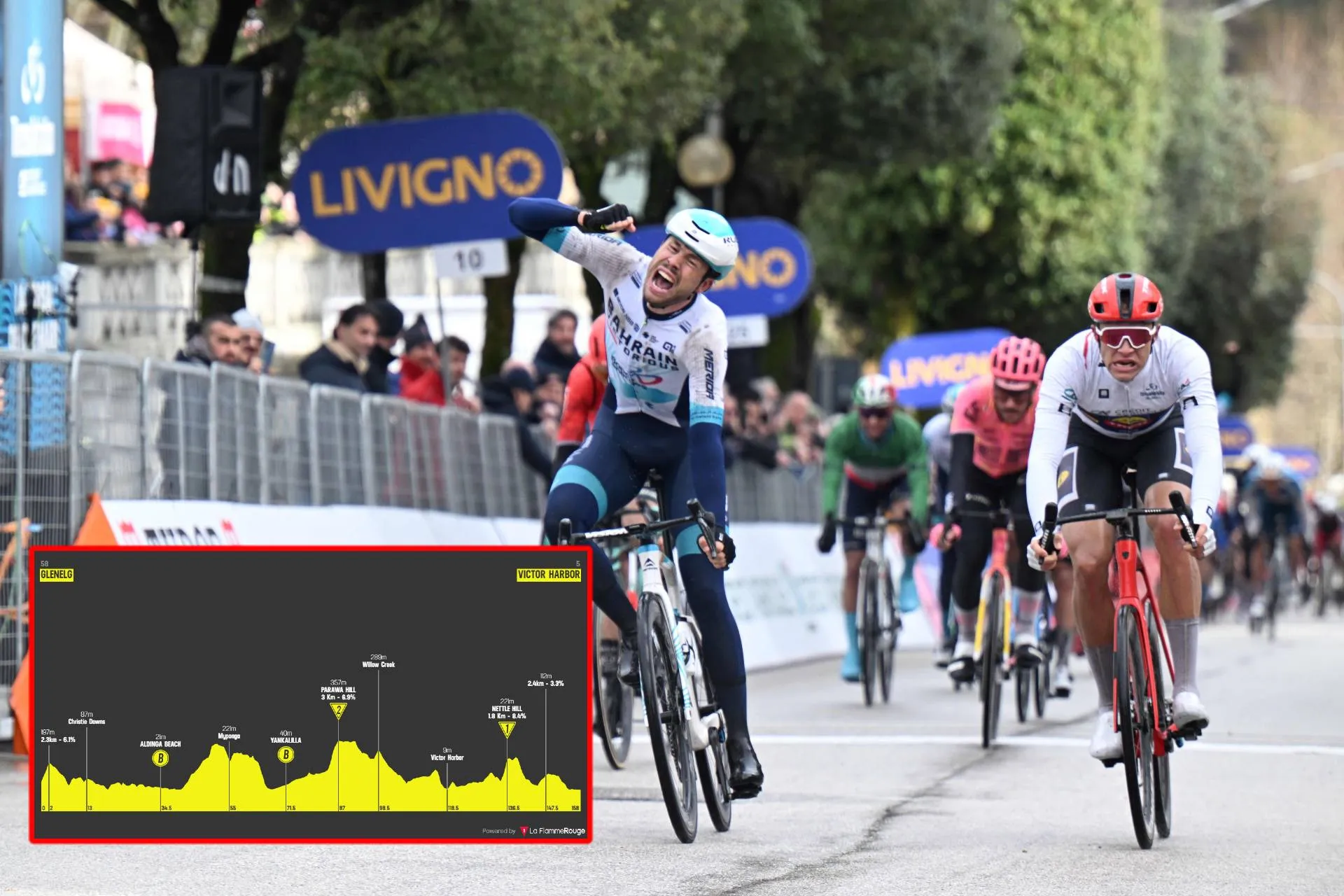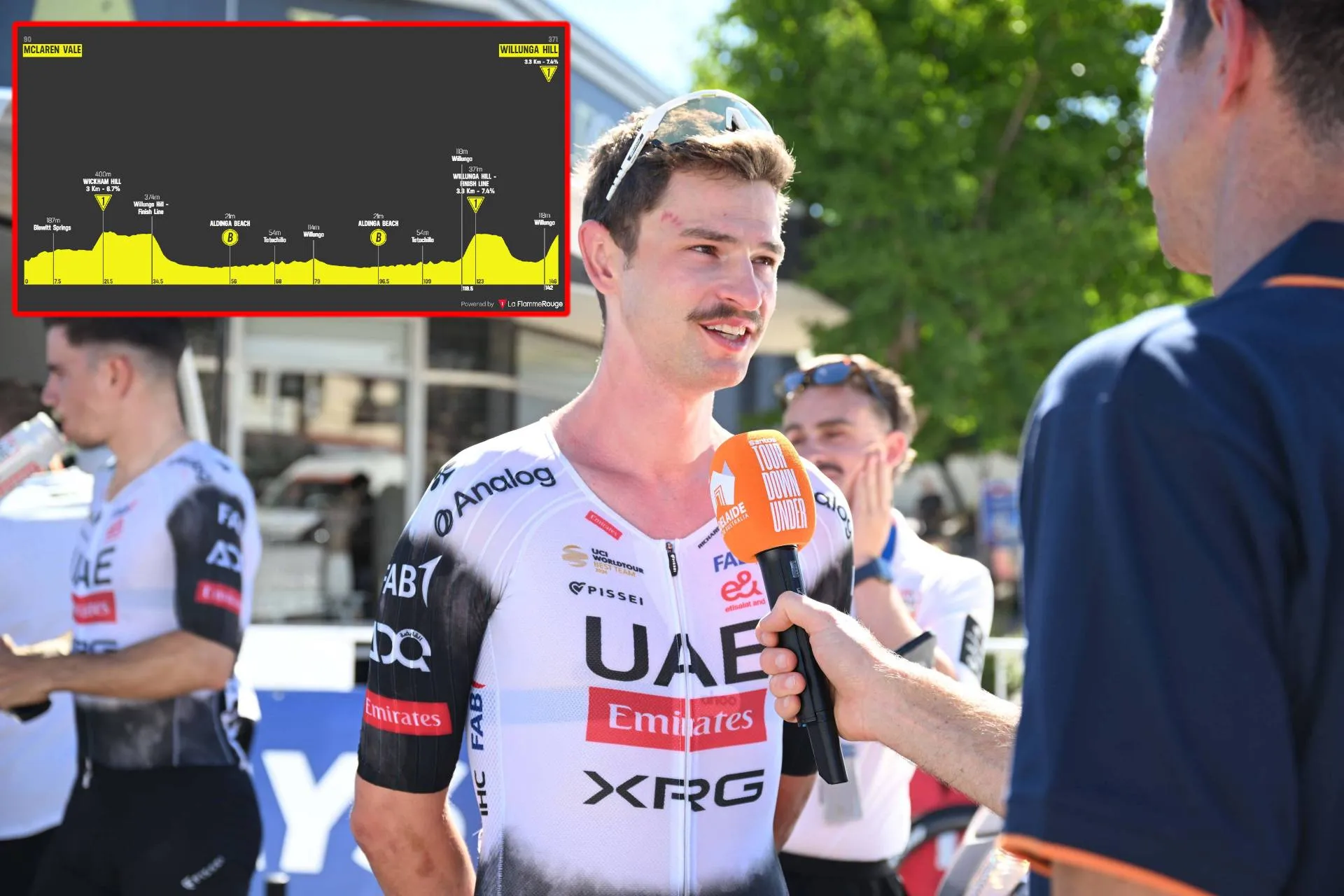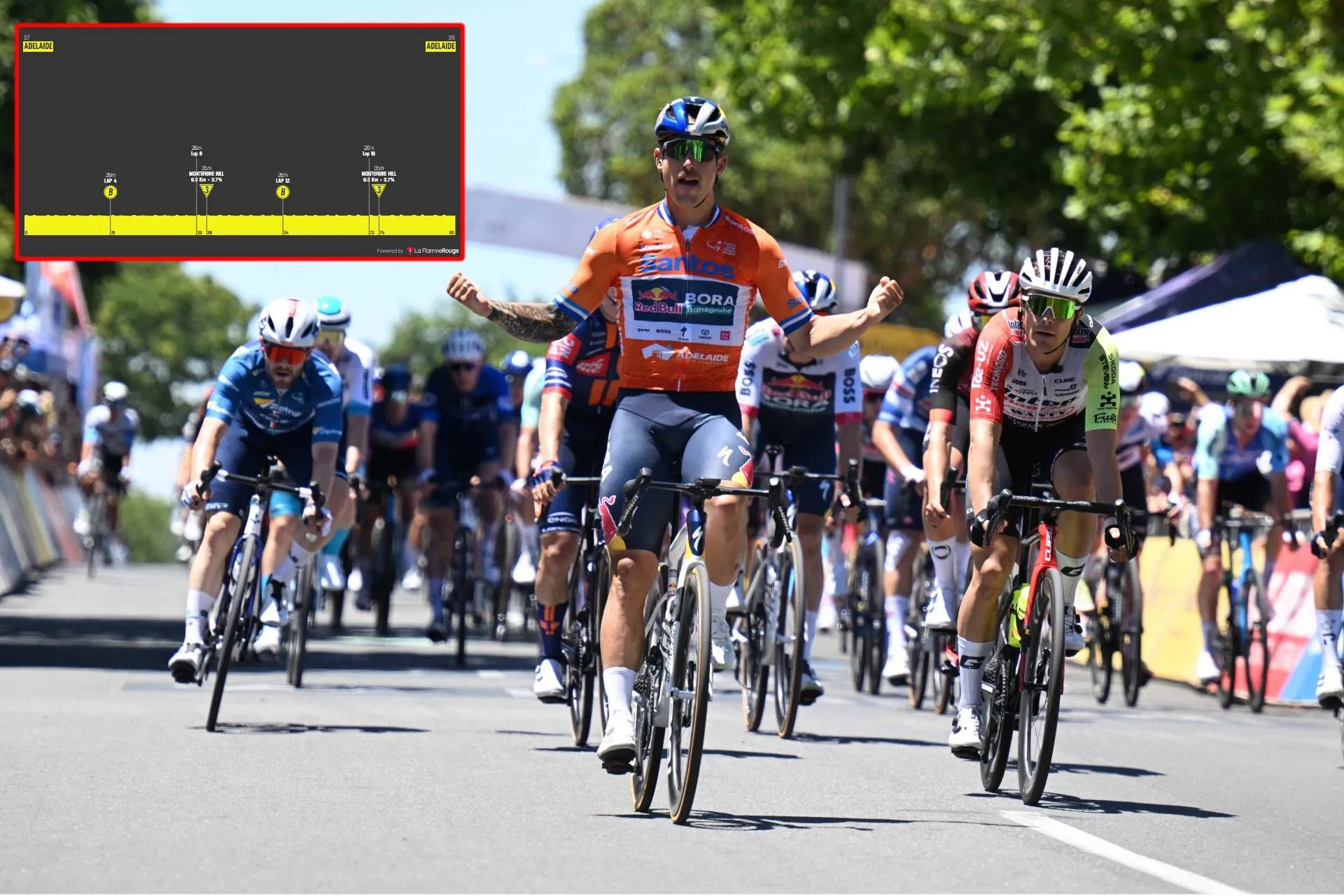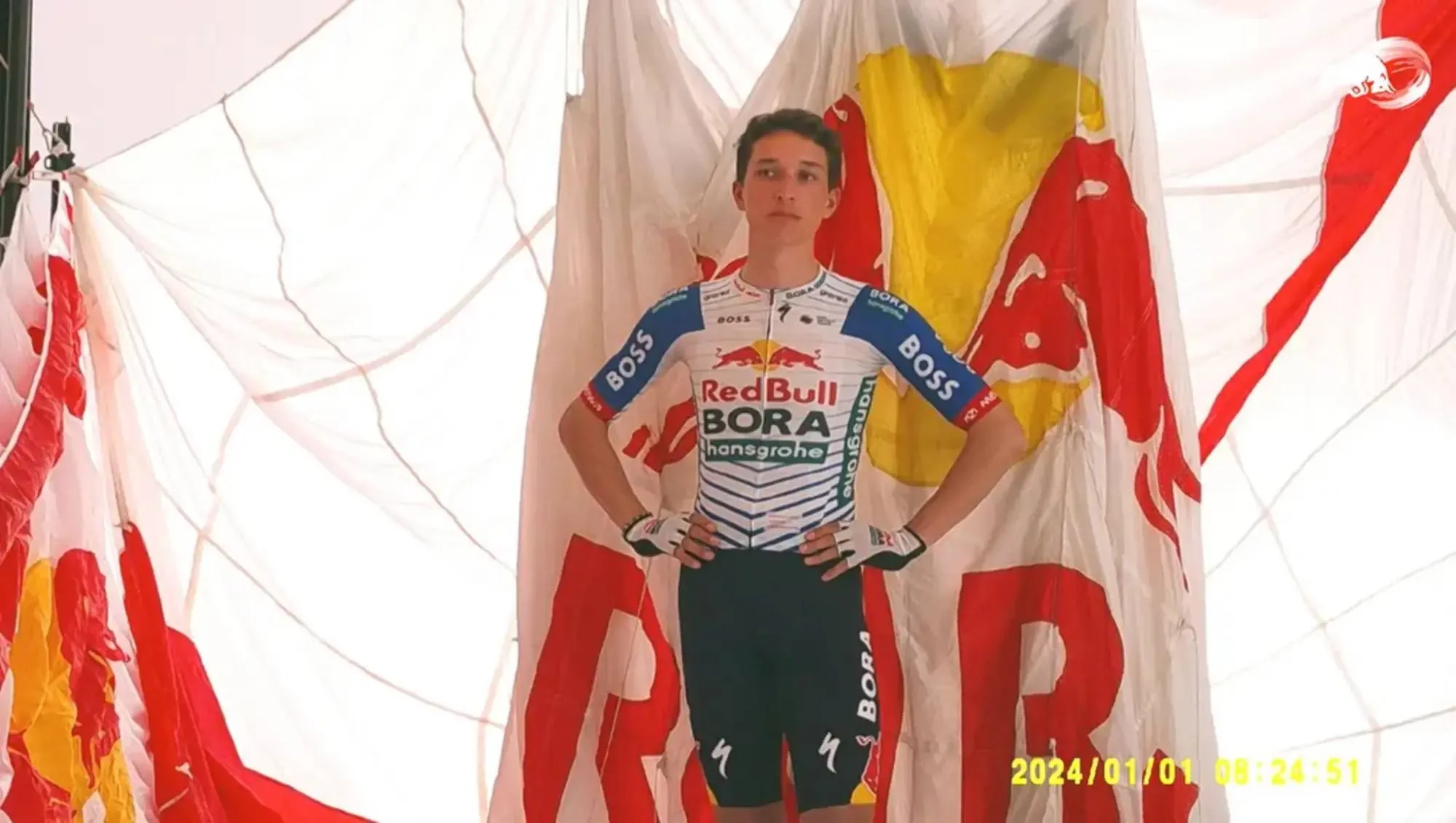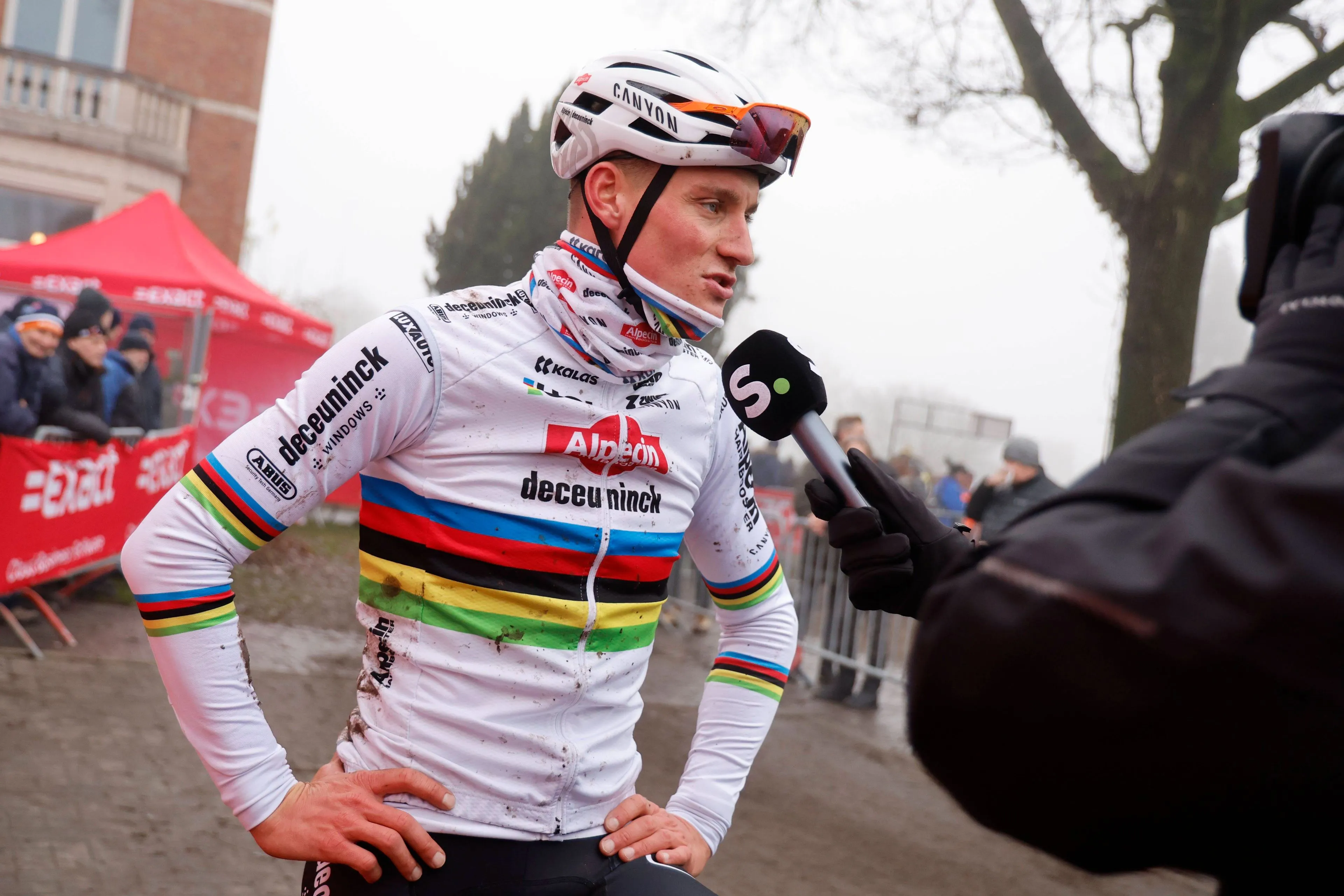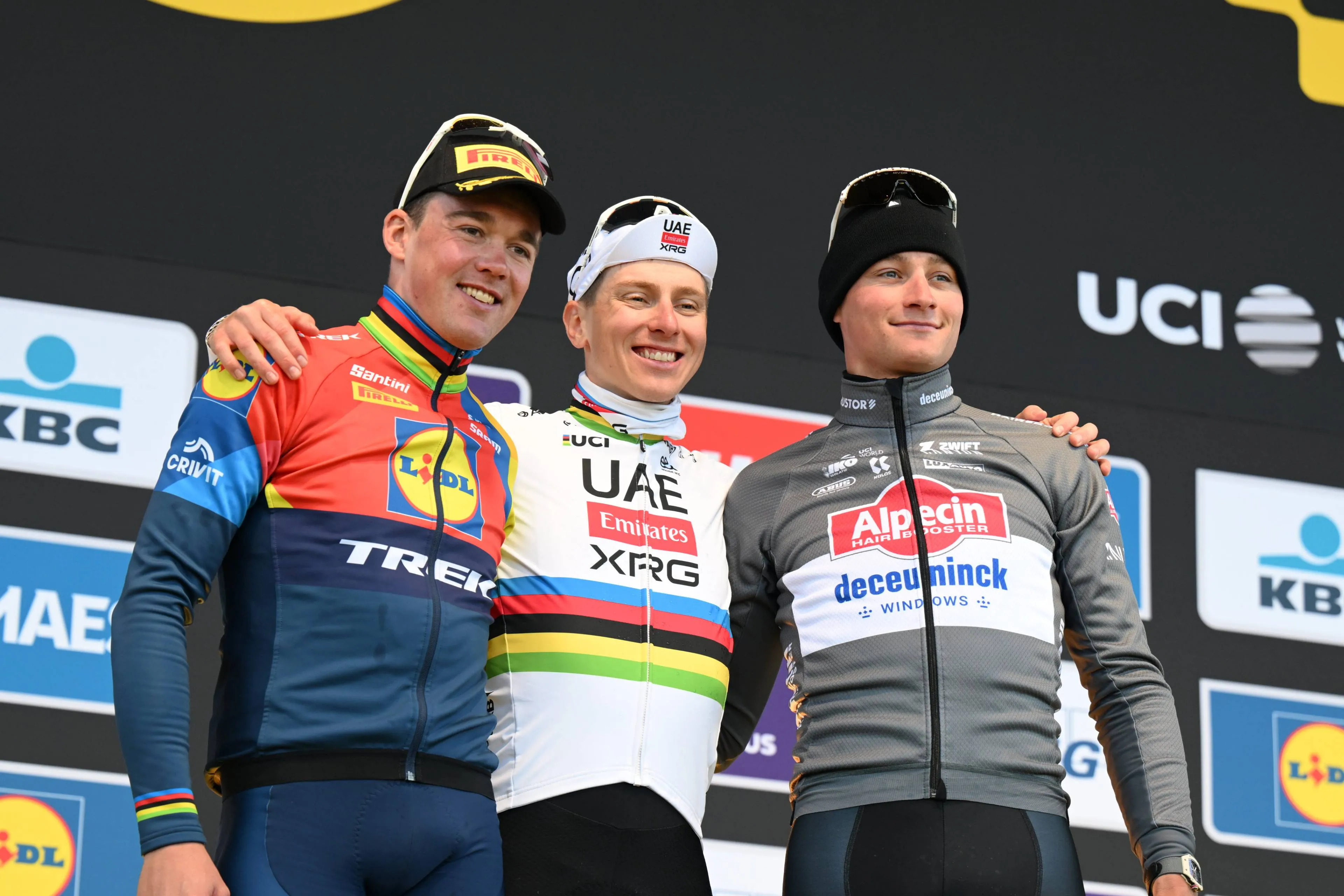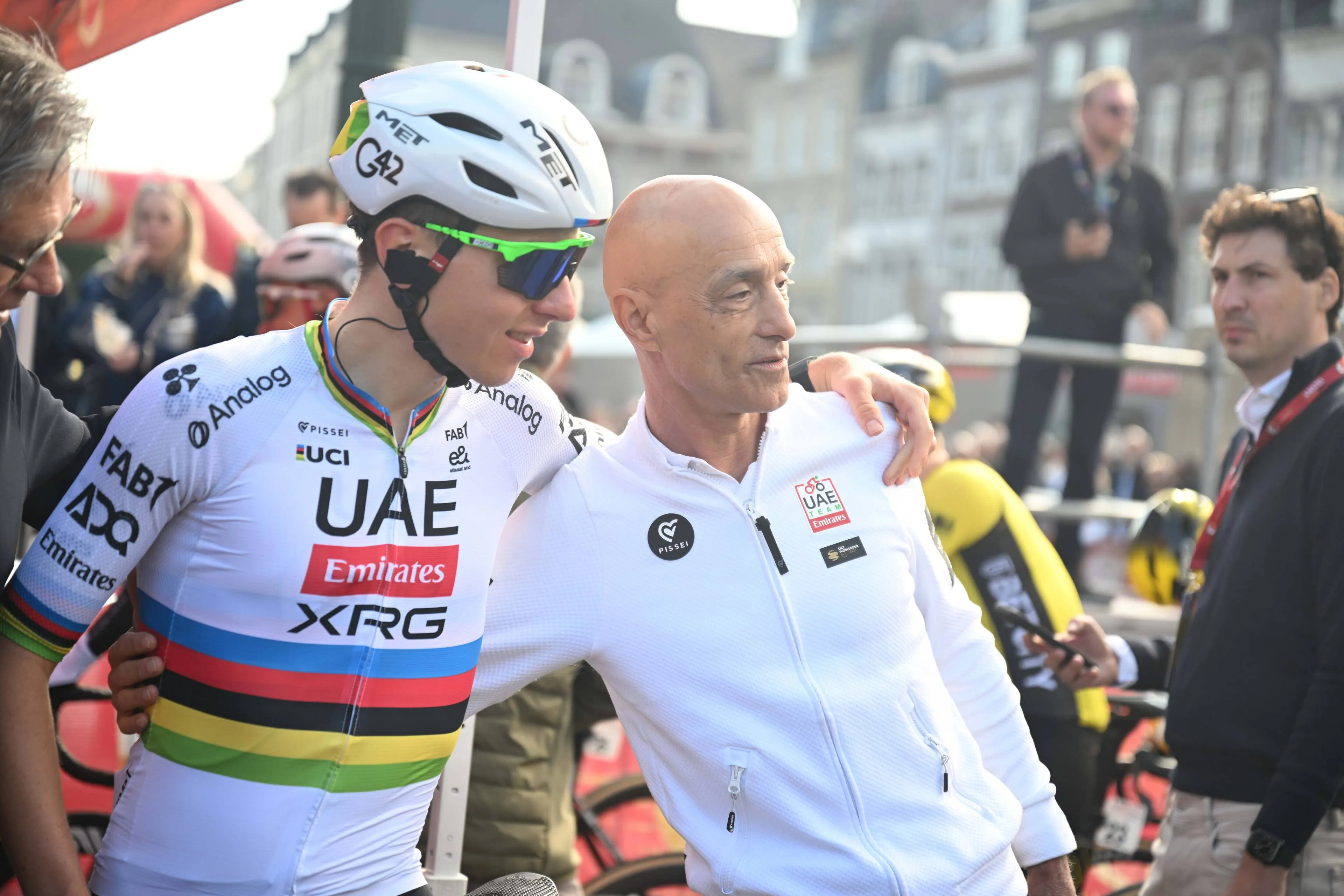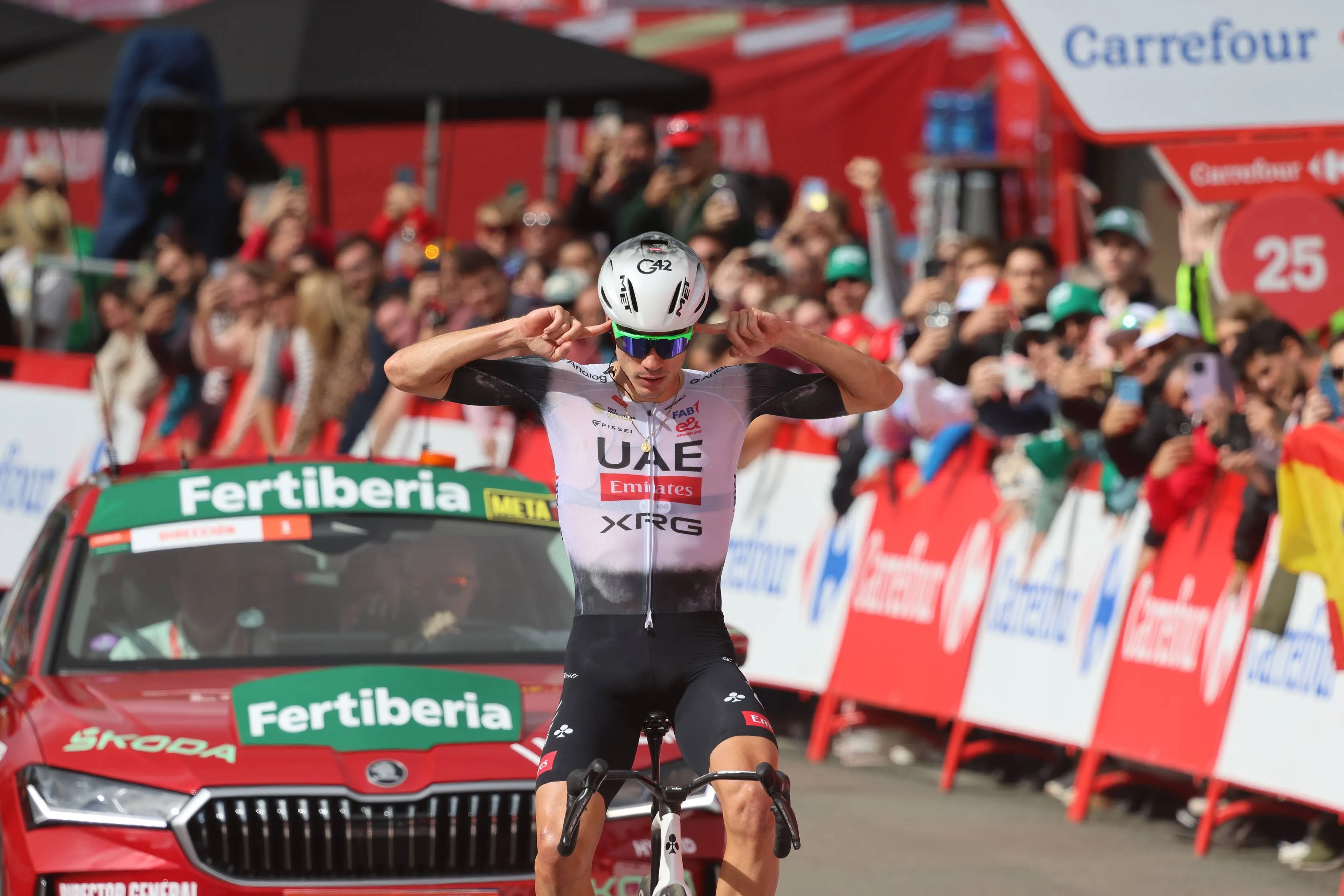Profiles & Route Tour Down Under 2025 - Old Willunga Hill and explosive hilly stages to define GC
CyclingFriday, 24 January 2025 at 11:59

From the 21st to the 26th of January we have got the first men's World Tour event of the year. In Australia, the Tour Down Under is every single season the first big race of the year and we take a look at it's profiles.
The route consists of six stages as usual, short and without many technical roads which provides the opportunity for the riders to have a calm start to the season in warm temperatures. The race features a few tricky hilly days, but also the classical Old Willunga Hill as the day where the GC is the most likely to be decided.
Read also

Stage 1: Prospect - Gumeracha, 150 kilometers
The race starts off with a slightly hilly day from Prospect to Gumeracha, but it should be the sprinters to fight for the ochre jersey in the first finale of the race which will be rather technical. It's not a pan-flat day, with 1600 meters of climbing, but the climbing won't be too difficult either.
There will be a two-lap circuit into the the finish, it will include a climb that is 1.5 kilometers long at 6.7% which could do damage, but it comes with 30 kilometers to the finish and it's unlikely that there will be teams wanting to go all-out from that far out. Likely a fight for positioning, a relatively calm climb, and then the approach to the finish.
This one won't be easy, it's not a finale with sharp bends or road furniture but instead the final kilometers will zigzag through a valley, with small uphill and downhill gradients which mean that the teams will want to position themselves very well from early on. From 1.2 kilometers to go to 400 meters to go it rises slightly, and then the final 400 meters slowly tilt to the left and have a slightly downhill gradient to it.
Read also

Stage 2: Tanunda - Tanunda, 128.8 kilometers
Stage 2 starts and finishes in Tanunda and it will include several ascents of Menglers Hill. Whilst not brutal, this ascent allows opportunities for attack or to drop some sprinters, but a bunch sprint is still expected in the straight line final kilometers.
It's a very short stage, so that should contribute to the chances of the fast men that for the most part will have a quick and calm ride. The stage is a 3-lap circuit and mostly on non-technical roads. The ascent, Menglers Hill, is 2.8 kilometers long at 6.6% and finishes with 22.5 kilometers to go.
There may be some attacks, there may be some teams pushing as not all sprinters can handle such an effort too well. It can be a finale with interesting dynamics but ultimately the final kilometers are a flat and completely straight line which means any attack or small group will struggle. 0 technical features, so leadouts can leave it late to push to the front.
Read also

Stage 3: Norwood - Uraidla, 147.6 kilometers
Perhaps the trickiest stage of the race. Being the one with the toughest start, up Norton Summit which immediately climbs from the start, it does create the opportunity for a strong group to be formed - however it's unlikely that it will happen, as that's a rare occasion in this race. Most of the day is flat but the finale does throw in a few difficulties.
Another circuit finish, this one into Uraidla which is not the first time in recent years. We have got the climb to Pound Reserve which has a pretty steep ramp at it's start, it's 2.7 kilometers long at 7.7% and the pace at the start should be very high over positioning.
On this climb you can see attacks, dangerous ones from the main contenders for the GC. It ends with 6 kilometers to go but from there to the finish it's even more dangerous. The roads are up and down and to chase down any attack is almost impossible - specially if it's not a solo rider. All-in-all it's a perfect finale for opportunists, any attack can succeed as the finale is downhill and the speeds will be very high, with a small group to chase.
Read also

Stage 4: Glenelg - Victor Harbor, 158 kilometers
Stage 4 is another explosive day that can be dangerous and even decisive for the GC. It's the only stage of the race that does not finish in a circuit, it's a tricky one too. An uphill start, a couple climbs throughout the day... A day for puncheurs and where it's possible for late attacks to succeed.
Nettle Hill close to the finale features some tough gradients and we can certainly see attacks there, it will be the key point of the day. It's 1.8 kilometers long at 8.4% and finishes with 21.5 kilometers to go. The steepest climb in the race, it can certainly see big moves. What happens after depends on the situation at the summit.
There is another small rise which is 2.4 kilometers long at over 3% where more attacks can come, mostly from rouleurs, closer to the finish with just over 10 to go. A small downhill and then a relatively technical finale into Victor Harbor. A flat one, but with a roundabout coming with only 400 meters to go. Positioning all the way at the front will be important.
Read also

Stage 5: McLaren Vale - Willunga Hill, 146 kilometers
The most famous climb in Australia is back once again for the queen stage that follows a traditional format. Starting in McLaren Vale, the peloton will ride around the area until they climb up the Old Willunga Hill twice. Early in the day they will ascent the Wickham hill and actually go down the final ascent which should see some crazy speeds.
However most of the day will be flat, and in the penultimate climb there are never serious moves. It's all about saving the legs to the final climb and then deliver some impressive watt bombs. It's one where the climbers are better suited but it's not overly difficult and some puncheurs can also handle the more constant pace as it's not too long.
The climb is 3.3 kilometers long at over 7%, it's tough enough to make some difference and in this race every second counts. The climb is constant and towards the end it features a few bends. In some years a late attack succeeds, but we can't discard the possibility of a small group sprint to the line.
Read also
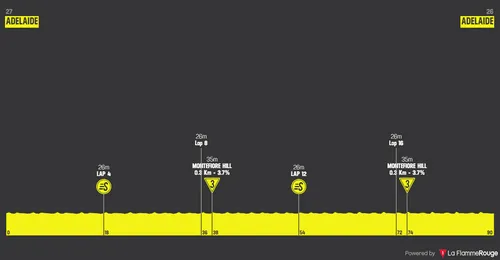
Stage 6: Adelaide - Adelaide, 90.3 kilometers
The race finishes with the traditional criterium in Adelaide, where the sprinters will fight for one final win in a very fast stage. There really isn't too much to say about this stage, it's completely flat and features around two dozen laps of a small and explosive circuit. If a breakaway goes up the road, it won't be easy to catch them.
But this is terrain for all-out pace from the start, and the sprinter teams should be able to control it. All eyes on a bunch sprint and the final corner which comes very close to the finish, ending at around 200 meters to go.
Leadouts will be crucial here as whoever starts their sprint from the front may very well be close enough to the finish to avoid being surprised by the fast men coming from behind.
Read also
Don't just watch the action, be part of it! 🚲 From children to adults, there's a ride for every level of cyclist 🙌 Join the ride: https://t.co/S7UhhJpJmR#TourDownUnder @SantosLtd pic.twitter.com/gsq8T7ADmf
— Santos Tour Down Under 🚴🚴♀️ (@tourdownunder) January 8, 2025
claps 0visitors 0
Just in
Popular news
Latest comments
- Being Pogi's mechanic would be absolutely terrifying. he wins like 90% of the races he enters and if there is a loss due to mechanical issues especially in the GTs/Monuments , you are going to get the bootabstractengineer15-12-2025
- Some of these cyclists are really stupid. So a more important rider is hired, there are too many leaders, he talk betrayal, He talks adjustments, He is not selected for any GTs. and he still signs for them🤦🤦🤦abstractengineer15-12-2025
- "He’d sit in the kitchen drinking red wine with the chef for hours after dinner" strange but how is it related to dopingabstractengineer15-12-2025
- 🤣. he cannot surpass Merckx ever. Its not called ambition, its stupidityabstractengineer15-12-2025
- True - maybe there will be some chances for gee to ride for himself - he’s very good, but a GT winner? Seems a bit too far for him (or skelmose tbh) I’m glad Gee found a place - love how he rides and he seems a genuinely good fellowCrashjames15-12-2025
- I think it would be painful setback...MajorPayne15-12-2025
- Not even raced a Grand Tour yet and already got riders cheating. Just ensured they never get my support as can't even exist a couple years without cheating.HoopoeChai15-12-2025
- Now , we know who this guy is because he talked bad about Lazcano.
 PAULO15-12-2025
PAULO15-12-2025 - unfortunately for Nys, he raced as well as he can. And MVDP had plenty of room to improve.mij15-12-2025
- God isn't real. Thankfully we have Tadej!!!Veganpotter15-12-2025
Loading
Write a comment
